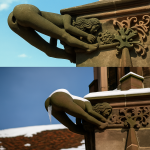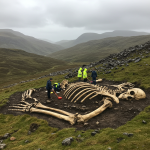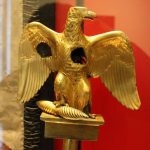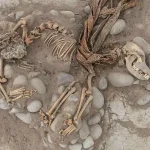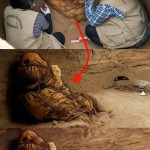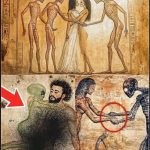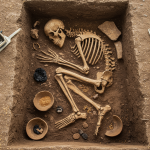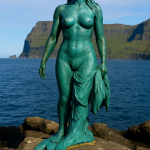The Anatomical Machines (Italian: macchine anatomiche) are a pair of anatomical models reproducing the human circulatory system, displayed in the Cappella Sansevero in Naples.

The models were commissioned by Raimondo di Sangro, prince of Sansevero, and realised by Giuseppe Salerno, an anatomist from Palermo, around 1763.[1] Some legends, disproved by modern studies, account for the direct involvement of the prince in the building process, while in fact he only bought them.[2] A contract, found in the notary archive of Naples, states that di Sangro provided to Salerno metal wire and wax for the work.[3] They were described in detail for the first time in the Breve Nota (short note), an 18th-century guide to Palazzo di Sangro and its chapel. It also accounts the existence of a third machine, a fetus complete with placent

a: it was exposed together with the two other machines up to the 1990s, when it was stolen. The models were firstly located in the so-called appartamento della fenice (phoenix’s apartment) in Palazzo di Sangro,
where in 1775 they were seen by Marquis de Sade,[ and they were moved to the chapel only after the death of the prince.[1] The exceptional details in the reprod
uction of the vessel system is
behind a popular legend, referred in the aforementioned guide and also quoted by Benedetto Croce, saying that the two machines were realised through alchemy experiments done by Sansevero on two servants when still alive,[2] injecting in their body a quicksilver-based compound which would have turned their blood into metal, preserving the circulatory system after death.[1][4] According to an essay by Sergio Attanasio, professor of history of architecture, the prince was not directly involved in the creation of the two models, but he bought them directly from Salerno after they were complete.[2] Head of the male model In 2008 a group of researchers from University College London was authorised from the owners to analyse the models in the chapel.  They found that the skeletons are true human ones, while the model of the blood vessels is made with metal wire, coloured wax and silk, using techniques common to anatomical studies of that time,[5] with no evidence in favour of the popular legends.[1][5] According to their findings, the models contain some mistakes in the reproduction of the circulatory system, referred as not compatible with life.[2] Another analysis conducted in 2014 by a medical team from Ospedale San Gennaro in Naples confirms the authenticity of the two skeletons and the mistakes in the reproduction of the circulatory system, but considered them compatible with life. They also praised the accurate reproduction of the coronary system, despite the lack of knowledge about it at that time.[6]
They found that the skeletons are true human ones, while the model of the blood vessels is made with metal wire, coloured wax and silk, using techniques common to anatomical studies of that time,[5] with no evidence in favour of the popular legends.[1][5] According to their findings, the models contain some mistakes in the reproduction of the circulatory system, referred as not compatible with life.[2] Another analysis conducted in 2014 by a medical team from Ospedale San Gennaro in Naples confirms the authenticity of the two skeletons and the mistakes in the reproduction of the circulatory system, but considered them compatible with life. They also praised the accurate reproduction of the coronary system, despite the lack of knowledge about it at that time.[6]

